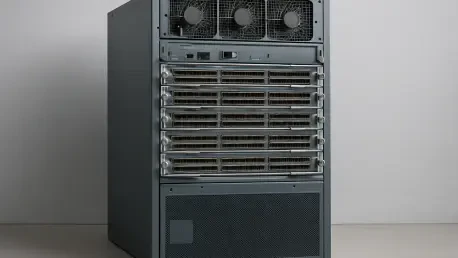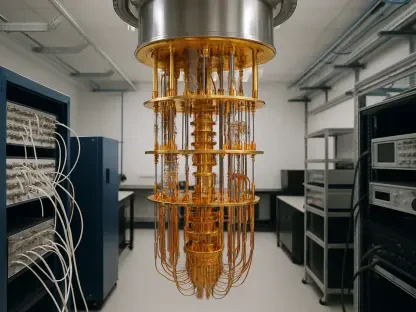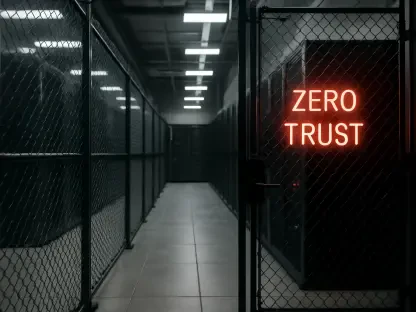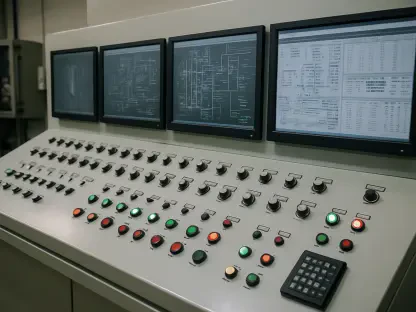Introduction
In today’s fast-paced digital landscape, enterprise data centers face the monumental challenge of managing massive transaction volumes and supporting cutting-edge AI applications with minimal downtime, while ensuring that even a slight delay in data access doesn’t result in millions of dollars in lost opportunities or compromised security. This is where the integration of Cisco’s MDS 9000 Series multilayer switches with IBM’s z17 AI mainframes becomes a game-changer, revolutionizing storage networking for high-performance environments. The significance of this collaboration lies in its ability to deliver robust, secure, and efficient data handling for businesses leveraging AI and hybrid cloud solutions.
The purpose of this FAQ is to address critical questions surrounding this technological synergy and its impact on enterprise operations. Readers can expect clear, actionable insights into how this integration addresses key challenges in storage area networks (SANs) and enhances mainframe capabilities. By exploring specific features and benefits, this content aims to provide a comprehensive understanding of the role Cisco and IBM play in advancing data center performance.
This discussion will cover compatibility, technical advantages, and the strategic importance of this partnership. From high-speed connectivity to advanced security measures, the focus will be on how these innovations meet the demanding requirements of modern AI-driven mainframes. Whether for IT professionals or business leaders, the following sections offer valuable takeaways for navigating the complexities of enterprise storage solutions.
Key Questions or Topics
What Is the Significance of Cisco MDS 9000 Integration with IBM z17 Mainframes?
The integration of Cisco’s MDS 9000 Series switches with IBM’s z17 mainframes marks a pivotal advancement in enterprise storage networking, particularly for environments focused on AI acceleration. This compatibility ensures that data centers can handle the immense workloads associated with large language models and generative AI applications. The importance of this development stems from the growing reliance on mainframes for mission-critical tasks that demand seamless data access and processing power.
A robust storage infrastructure is essential to meet stringent service-level agreements in such high-stakes settings. Cisco’s MDS 9000 Series provides a foundation for high throughput and low latency, directly addressing the challenge of maintaining performance under pressure. This collaboration allows organizations to leverage the full potential of IBM’s z17, a mainframe engineered specifically for the AI era, ensuring that storage networks keep pace with computational demands.
Evidence of this significance is seen in the long-standing partnership between Cisco and IBM, with IBM reselling Cisco storage equipment for years. Their joint commitment to service, licensing, and firmware support further validates the reliability of this integration. As a result, businesses gain confidence in adopting solutions that are both innovative and backed by industry leaders.
How Does Cisco MDS 9000 Support High-Speed Connectivity for IBM z17?
High-speed connectivity is a cornerstone of mainframe performance, especially when dealing with massive databases and real-time transaction processing. The Cisco MDS 9000 Series is designed to support the Fibre Connection (FICON) protocol at speeds of 32G and 64G, catering to the needs of IBM z17 environments. This capability ensures that data transfers occur rapidly and efficiently, minimizing bottlenecks in mixed Fibre Channel/FICON setups.
Beyond raw speed, the series eliminates additional licensing costs for critical features like Control Unit Port (CUP) and fabric binding. This cost-effective approach allows enterprises to integrate advanced storage solutions without financial strain. The focus on seamless connectivity directly tackles the challenge of maintaining uptime in data-intensive operations, a common pain point for IT teams managing mainframe workloads.
Such technical prowess is complemented by the ability to operate in hybrid environments, where legacy systems and modern AI applications coexist. The MDS 9000 Series bridges these worlds, ensuring that IBM z17 mainframes can access storage resources without compatibility issues. This adaptability is a key factor in its widespread adoption across enterprise data centers.
What Security and Resilience Features Does Cisco MDS 9000 Offer for Mainframe Environments?
Security and resilience are non-negotiable in mainframe environments, where sensitive data and critical applications are at stake. The Cisco MDS 9000 Series incorporates advanced security measures, including quantum-resistant encryption and secure boot technology, to safeguard data against evolving threats. These features are particularly vital for industries handling confidential information, ensuring compliance with strict regulatory standards.
On the resilience front, the series boasts redundant components and a fault-tolerant architecture. This design minimizes the risk of system failures, a crucial consideration for environments where even brief downtime can have severe consequences. By prioritizing uptime and data integrity, Cisco addresses the inherent challenges of maintaining continuous operations in AI-driven mainframe setups.
Additionally, integration with the Cisco Nexus Dashboard enhances operational reliability through AI/ML-powered management tools. These tools predict and mitigate potential issues, such as optics failures, before they impact performance. This proactive approach to resilience underscores the suitability of MDS 9000 for supporting the robust needs of IBM z17 mainframes in high-pressure scenarios.
Why Is the Partnership Between Cisco and IBM Critical for Enterprise Data Centers?
The collaboration between Cisco and IBM represents a strategic alliance that strengthens enterprise data center capabilities. With a history of working together, this partnership ensures that solutions like the MDS 9000 Series are thoroughly validated for IBM z17 mainframes, providing a seamless user experience. The mutual support for service and updates fosters trust among businesses relying on these technologies for critical operations.
This relationship addresses the broader challenge of integrating cutting-edge storage solutions with mainframe technology. By combining Cisco’s expertise in storage networking with IBM’s leadership in AI-ready mainframes, enterprises gain access to a cohesive ecosystem tailored to modern demands. The result is a streamlined approach to managing complex workloads without sacrificing performance or security.
A notable aspect of this alliance is its forward-looking nature, with both companies committed to evolving their offerings. As data center requirements grow from the current year to 2027, this partnership will likely continue to deliver innovations that keep pace with industry trends. Such dedication ensures that enterprises remain equipped to handle future challenges in AI and hybrid cloud environments.
Summary or Recap
This FAQ highlights the transformative impact of integrating Cisco’s MDS 9000 Series switches with IBM’s z17 AI mainframes, emphasizing their role in enhancing storage networking for enterprise data centers. Key points include the series’ support for high-speed FICON connectivity at 32G and 64G, robust security features like quantum-resistant encryption, and enterprise-class resilience through fault-tolerant design. These elements collectively ensure that mainframe environments meet the rigorous demands of AI applications and massive transaction volumes.
The strategic partnership between Cisco and IBM stands out as a cornerstone of this integration, offering validated solutions and comprehensive support. The elimination of additional licensing costs for critical features and the use of AI/ML-powered management tools via Cisco Nexus Dashboard further enhance operational efficiency. These takeaways underline the importance of a strong SAN infrastructure in maximizing mainframe performance.
For those seeking deeper insights, exploring resources on storage networking protocols or mainframe AI applications is recommended. Technical documentation from Cisco and IBM provides detailed specifications and case studies that can further illuminate the benefits of this collaboration. Such materials offer a valuable next step for IT professionals looking to optimize their data center strategies.
Conclusion or Final Thoughts
Looking back, the integration of Cisco MDS 9000 with IBM z17 mainframes proved to be a significant milestone in addressing the complex needs of enterprise data centers. It offered a robust solution that tackled high-speed connectivity, security, and operational resilience with precision. This synergy paved the way for enhanced performance in AI-driven environments, setting a benchmark for future innovations in storage networking.
As a next step, organizations are encouraged to evaluate their current storage infrastructure and consider how adopting such integrated solutions could elevate their capabilities. Assessing specific workload requirements and consulting with experts from Cisco and IBM can provide tailored guidance for implementation. This proactive approach promises to position businesses at the forefront of technological advancement.
Reflecting on this development, it is clear that staying ahead in the digital era requires embracing partnerships and technologies that prioritize efficiency and security. Enterprises are urged to think about aligning their strategies with scalable, AI-ready solutions to future-proof their operations. Such considerations hold the potential to transform challenges into opportunities for growth and innovation.









